Laboratory design might look simple – but these complex facilities can often be more complicated than they seem. Finding the right balance between flexibility and efficiency is what makes a beautiful design sing.
Eurofins is the global leader in food, environment, pharmaceutical, and cosmetic product testing, and their recent 108,000 GSF, high throughput, analytical lab was built with this harmony in mind. Eurofins plays a key part in the food chain of consumers, and this lab is one of a kind – not just in Madison, but the world. Their Madison, WI facility is the largest food testing lab of its kind.
Check out this testimonial from Brent Rozema, Owner’s Representative for Eurofins.
After outgrowing their previous facility, Eurofins is now at home in a building that was designed to suit their needs and processes. Eurofins’ new building includes two main chemistry labs over 10,000 SF each with 44, 6-foot fume hoods combined.
Click on the photos to view a VR panorama!
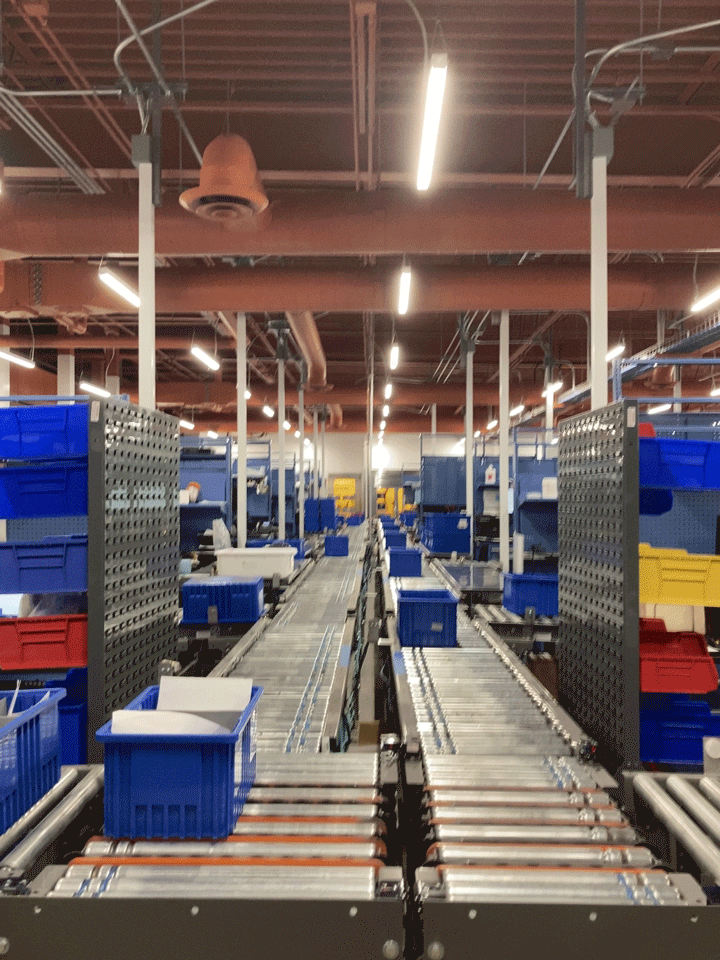
This is especially beneficial to a company like Eurofins where the sample reigns supreme. As a company they deal with thousands of samples every day, identifying, logging, and distributing them into all the right places. Keeping these samples moving through the lab is essential. Our designers worked to create a clear flow through the building from receiving to end. Now, the samples make their way in a straight line from the loading dock to the office. This all lends itself to the efficiency of the space. Saving seconds from the analysis of one sample adds up when looking at the vast quantities of samples Eurofins receives. Hours of labor are saved and the turnaround time for the samples can reach this competitive market faster – saving Eurofins and their clients valuable time and money.
The scientific field is ever-evolving as advancements continue to race forward. Changes in assays, equipment, and regulations are always occurring and it is essential that scientific facilities can respond to these shifts. Along with efficiency, flexibility is key to the long-term success of a scientific facility. Labs like Eurofins that have been designed to adapt and respond to new scientific processes and adjustments will find themselves with a building that fits their needs for years to come. Strang designed this facility with flexibility in mind so that as departments grow/contract, the functions of the lab will evolve with them.
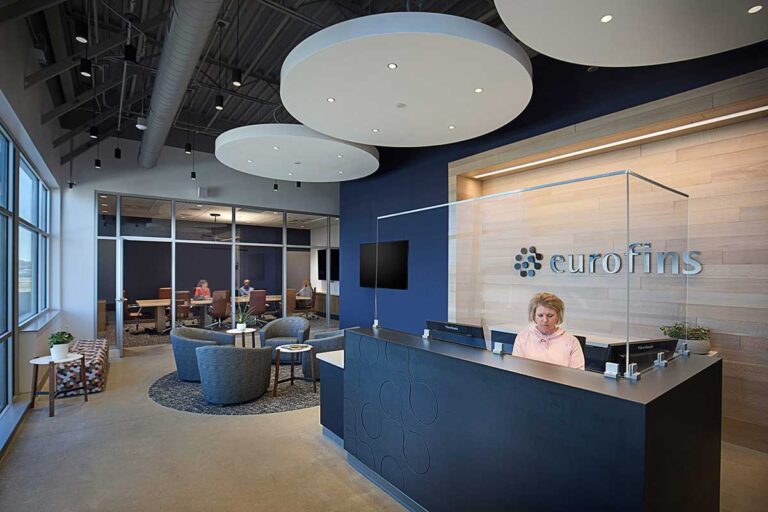
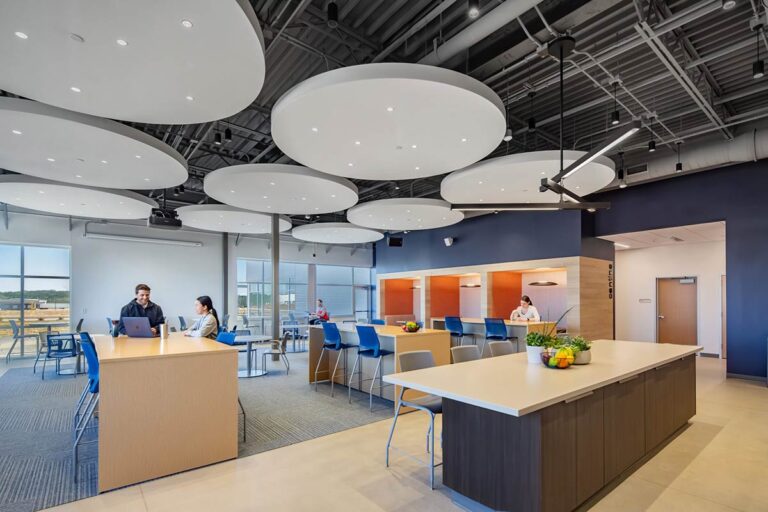

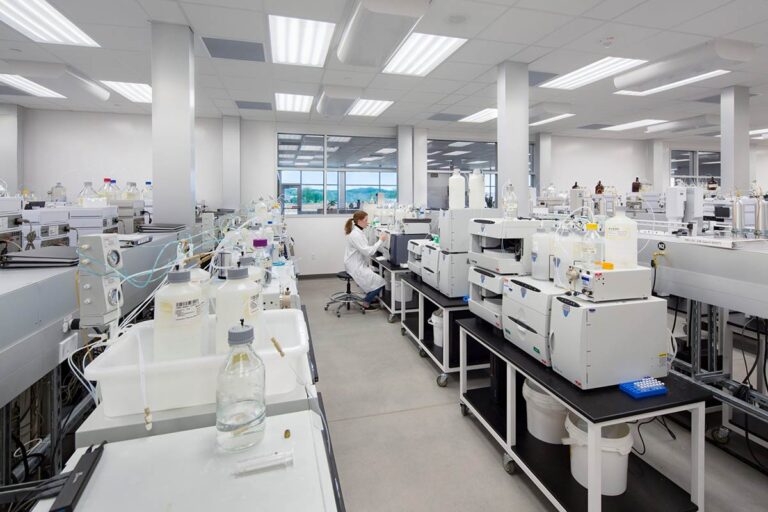
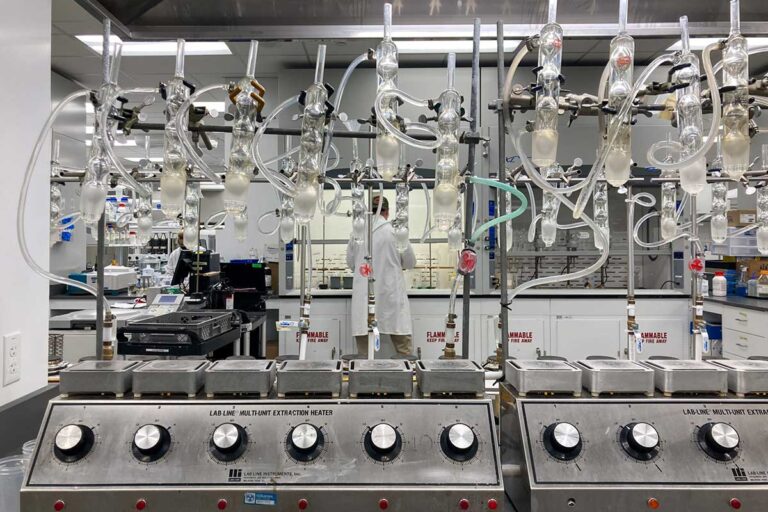
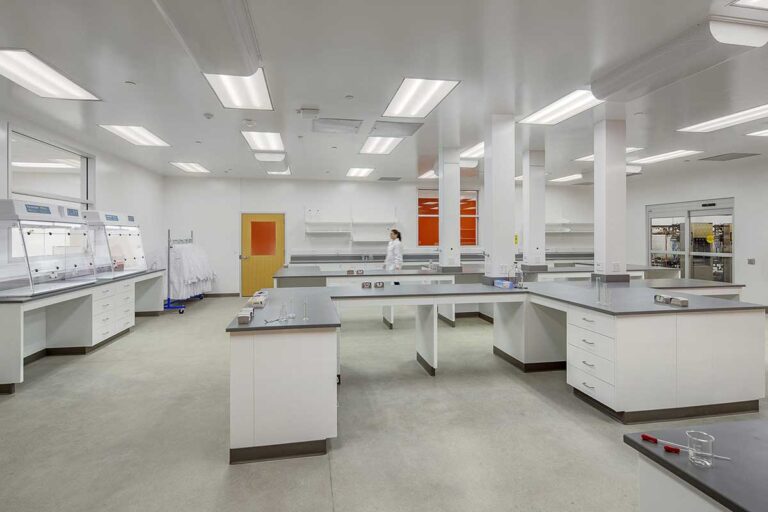
The ability to pivot and adapt to changing needs was just as important to the Eurofins team as designing efficiency into their space and is a hallmark of successful lab planning.
Discover more about Strang’s lab planning process here.









